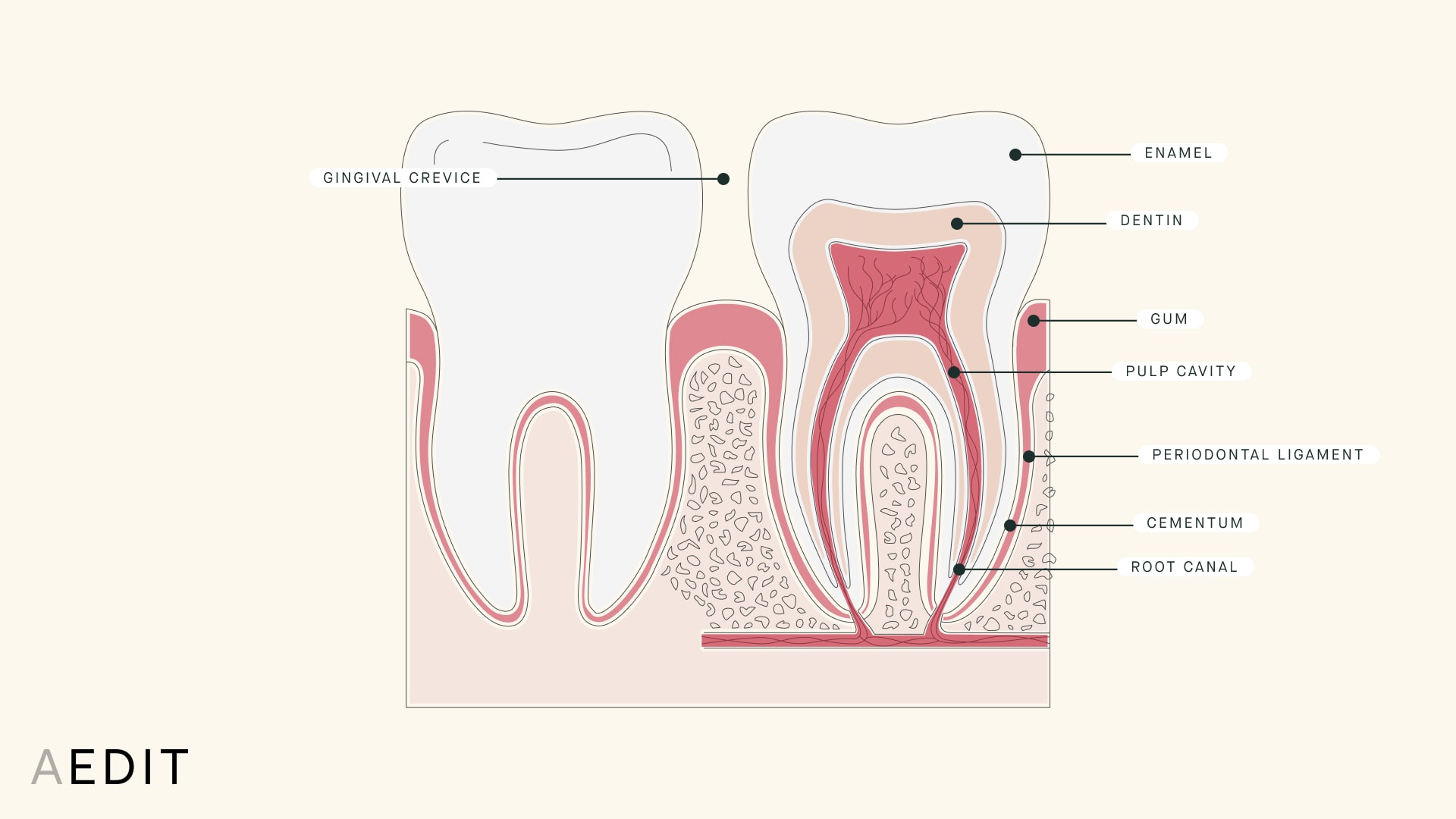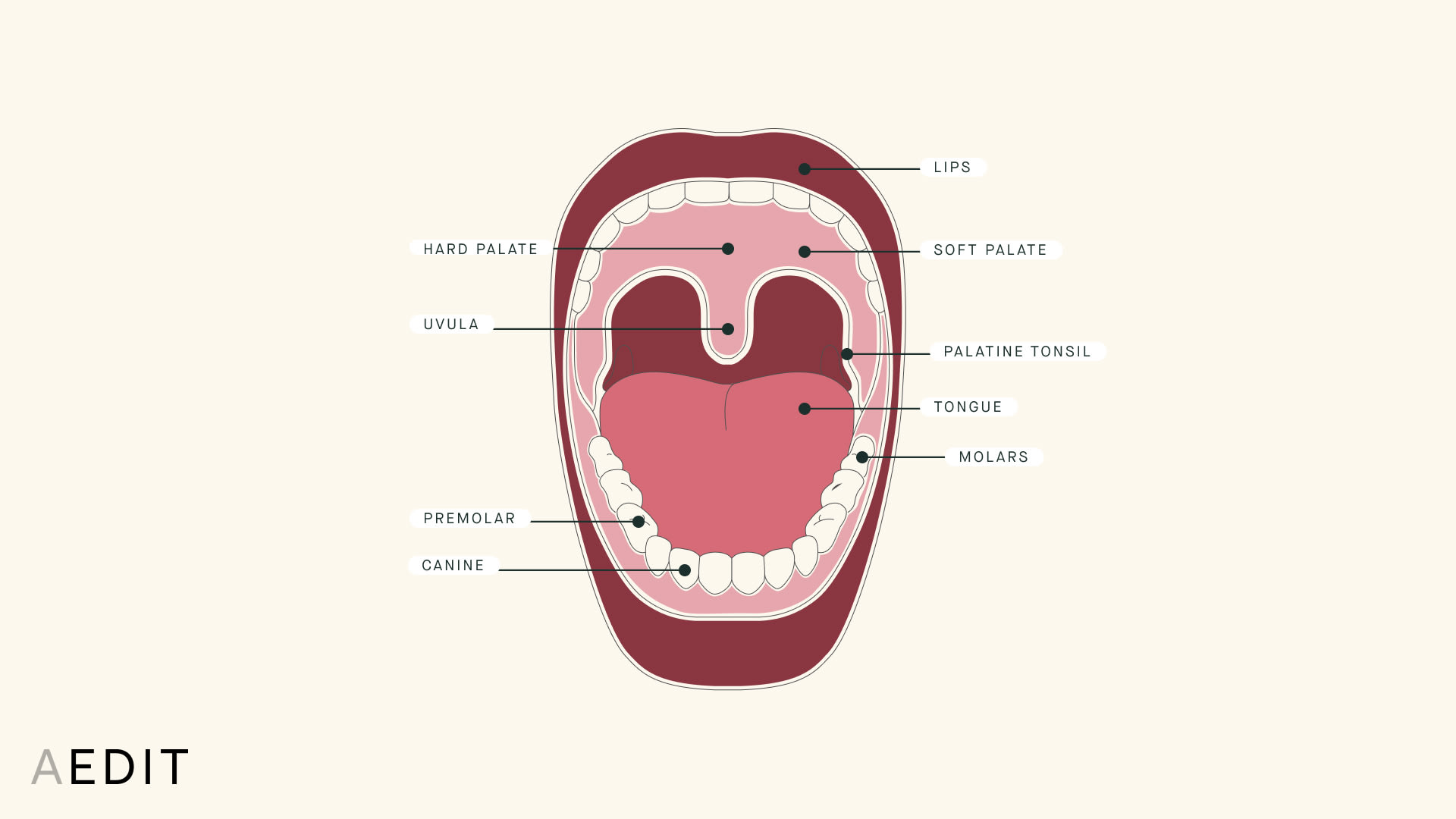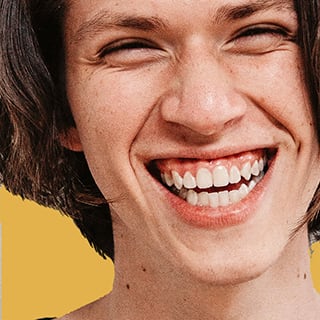Published: January 27, 2021
Last updated: February 18, 2022
The Skinny
Content Reviewed by AEDIT Medical Advisory Board
Overview
While some of us may be reminded of how attached we were to our pacifier or teased for our thumb sucking, our adult teeth are the culmination of our childhood habits, the growth of the jawbones, and our oral hygiene. After baby teeth fall out, a child’s teeth undergo normal growth to form adult teeth. Development of adult teeth (permanent teeth) can be influenced by underlying developmental anomalies of the teeth, poor home care, poor habits (like tongue thrust), and hereditary conditions. Fortunately with the assistance of a healthcare provider, orthodontic treatment, or cosmetic dentistry procedure, teeth misalignment and jaw misalignment can be effectively and permanently addressed.
The Specifics
What is the anatomy of the teeth and jaw?
The oral cavity is formed by the upper jaw bone (maxilla) and lower jaw bone (mandible). The tongue is a muscle attached to the hyoid bone-the only free floating bone in the body. The gums (gingiva) and buccal mucosa (lip and cheek lining) line the mouth and jaw bones. The hard palate sits towards the upper front teeth and transitions into the soft palate as it moves towards the back of the throat where the uvula hangs.
The Anatomy of the Tooth

Humans have 32 teeth generally categorized as molars, canines, and incisors. The roots of teeth are embedded in the jaw bones and are highly sensitive. The white coating on teeth is composed of enamel.
What causes the misalignment of the teeth and bite?
While many misalignment disorders of the teeth and bite are hereditary, lifestyle habits and trauma can also play a role in the formation of these conditions. Childhood habits like thumb sucking and pacifier use can impact normal jaw development. Additionally, any facial or oral trauma can significantly impact teeth and jaw bone alignment.
The Anatomy of the Oral Cavity

What are the main concerns related to misaligned teeth and bite?
To better understand your unique concern, an overview of the general classifications of issues with teeth and bite is below:
Who may wish to correct misaligned teeth or a misaligned bite?
As outlined above, teeth misalignment and bite misalignment can cause both cosmetic and health concerns. Candidates who wish to improve personal confidence and overall facial aesthetic, individuals noticing functional impact (speech, eating, or drinking), or those who wish to preserve oral health may benefit from a conversation with a certified professional.
How can someone correct misaligned teeth and bite?
Depending on the severity of the condition, misaligned teeth and misalignment of bite can be addressed in both professional and home settings. For mild to moderate teeth spacing and misalignment issues, candidates can consider home treatments and outpatient follow ups with an orthodontist. For severe or complex disorders surgical interventions may be required. A consultation with a certified professional can determine what is most appropriate.
For Spaced/Misaligned Teeth:
Can be corrected with both at home and in office brace solutions. Traditional metal braces, Damon Braces, Lingual Braces, or newer clear aligners like ClearCorrect, Invisalign, MTM Clear Aligners, Simpli5, and Smile Direct Club can provide dramatic results with consistent use. Additionally, dental procedures such as Dental Bonding, Dental Bridges, Dental Implants, and Dental Veneers can provide professional corrections.
For Overcrowding:
While severe overcrowding may require surgical intervention prior to braces use, most overcrowding can be corrected through professional or home use braces solutions. Traditional metal braces, Damon Braces, Lingual Braces, or newer clear aligners like ClearCorrect, Invisalign, MTM Clear Aligners, Simpli5, and Smile Direct Club are effective and simple to use with excellent results.
For Underbite, Overbite, Overjet, & Open Bite:
These conditions range in severity. For severe cases of these disorders, Orthognathic Surgery may be indicated to correct jaw structure and alignment prior to further correction. Many braces solutions like Traditional metal braces, Damon Braces, Lingual Braces, or newer clear aligners like ClearCorrect, Invisalign, MTM Clear Aligners, Simpli5, and Smile Direct Club can correct more mild to moderate cases.
To better understand the treatment options outlined above, check out our guide to Teeth & Bite Alignment Solutions.
The Takeaway
Our long term oral health is something to consider seriously. We get one set of permanent teeth, and the self confidence from a beautiful smile or the continued function of the teeth we sometimes take for granted can be enhanced and preserved through cosmetic dentistry and orthodontic treatments.
To learn more about our content creation practices, visit our Editorial Process page.
Source List
+AEDIT uses only high-quality sources, including peer-reviewed studies, to support the facts within our articles. Read our editorial process to learn more about how we fact-check and keep our content accurate, reliable, and trustworthy.

AEDIT
‘Try on’ aesthetic procedures and instantly visualize possible results with AEDIT and our patented 3D aesthetic simulator.
Find Top Aesthetic Providers Near You
Providers by Locations
- Alpharetta, GA Providers
- Boston, MA Providers
- Cockeysville, MD Providers
- Lone Tree, CO Providers
- Metairie, LA Providers
- Minneapolis, MN Providers
- More Locations
- New Haven, CT Providers
- Scottsdale, AZ Providers
- Skokie, IL Providers
- Southfield, MI Providers
- Springdale, AR Providers
- Tampa, FL Providers
- Torrance, CA Providers
- Washington, DC Providers
Providers by Specialties
- Cosmetic Dentistry Providers
- Cosmetic Dermatology Providers
- Cosmetic Surgery Providers
- Dermatologic Surgery Providers
- Dermatology Providers
- Facial Plastic and Reconstructive Surgery Providers
- General Surgery Providers
- Hair Restoration Surgery Providers
- Head and Neck Surgery Providers
- Medspa Providers
- More Procedures
- Oculoplastic Surgery Providers
- Plastic and Reconstructive Surgery Providers
- Vaginal Rejuvenation Providers
Providers by Procedures
- Acne Scar Treatment Providers
- Acne Treatment Providers
- Birthmark Removal Providers
- Blepharoplasty Providers
- Botox Providers
- Brow Lift Providers
- Buccal Fat Removal (Cheek Reduction) Providers
- Cheek Augmentation (Cheek Implants) Providers
- Cheek Surgery Providers
- Chemical Peels Providers
- Chin Surgery (Mentoplasty) Providers
- Dental Treatments Providers
- Dermabrasion Treatment Providers
- Dermal Fillers & Injectables Providers
- More Specialties


